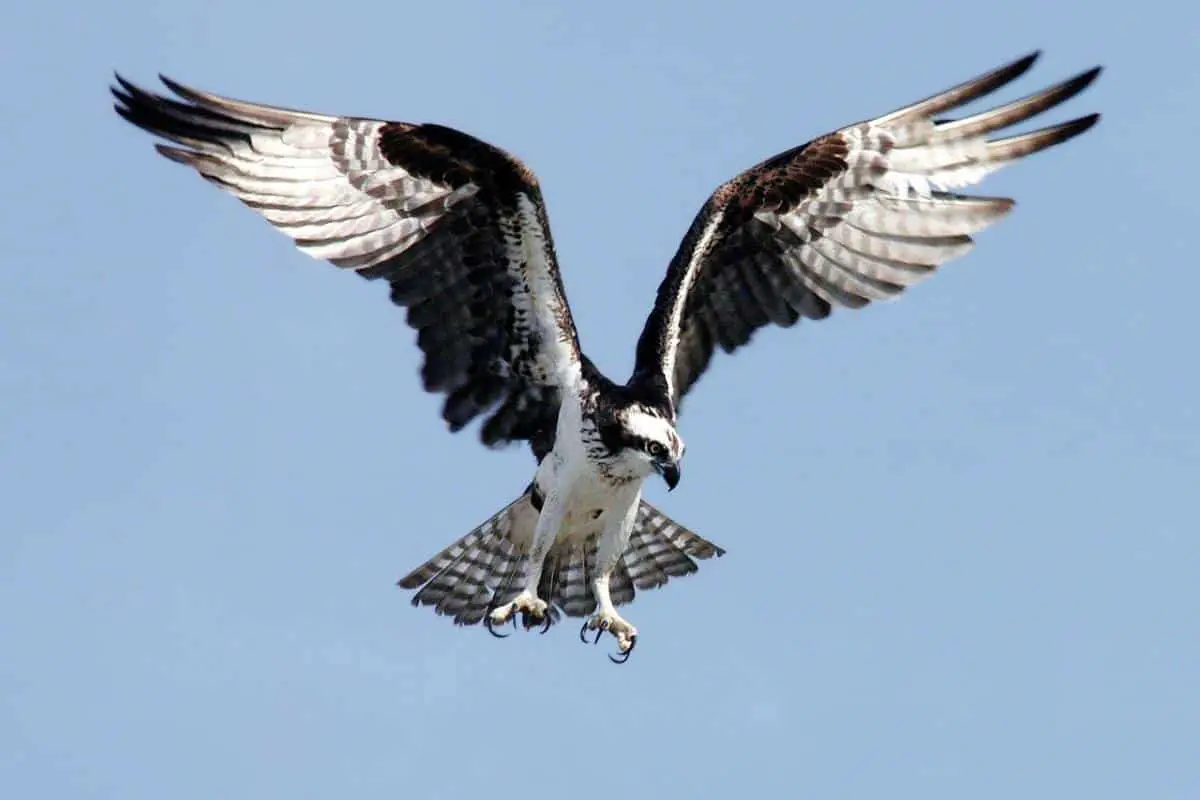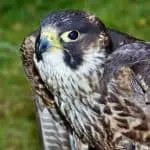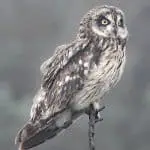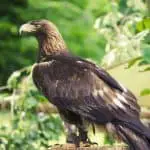Common Name: Osprey
Scientific Name: (Pandion haliaetus)| Size | Diet | Range in Hawaii | Status in Hawaii |
|---|---|---|---|
| 21 in. - 24 in. | fish, rodents, birds, and reptiles | Kaua'i, O'ahu, Moloka'i, Lana'i, Maui, and Big Island | Least Concern |
The Osprey (Pandion haliaetus) is a bird of prey that is known for its impressive fishing skills and unique appearance. With its distinctive white head and brown feathers, this bird is a common sight near bodies of water around the world. Although it is not a native species to Hawaii, it has been spotted occasionally on the islands, making for a rare and exciting sighting for birdwatchers.
In this article, we’ll explore the fascinating world of the Osprey and learn more about its unexpected presence in Hawaii.
Osprey
Appearance

The Osprey is a magnificent bird of prey that captures the imagination with its unique appearance. With a wingspan of approximately 59 to 71 inches (150 to 180 centimeters) and a length of around 21 to 24 inches (53 to 61 centimeters), the Osprey possesses a commanding presence in the avian world.
Its distinguishing feature is its striking plumage, showcasing a contrasting blend of white and brown feathers. The head and upperparts of the Osprey are predominantly dark brown, creating a regal contrast against its predominantly white underparts.
Diet
The Osprey, an impressive bird of prey, possesses a specialized and fascinating diet that sets it apart in the avian world. As a masterful hunter, the Osprey primarily feeds on fish, earning it the nickname “fish hawk” or “sea hawk.” Although fish constitutes the majority of the Osprey’s diet, it occasionally includes other small animals such as rodents, birds, and reptiles in its meals.
Nesting
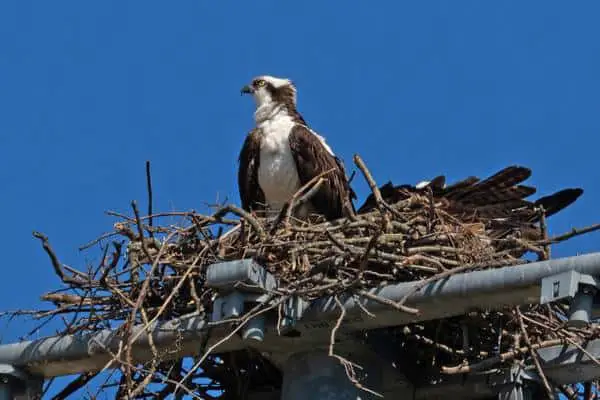
These magnificent birds construct large, sturdy nests that serve as their breeding grounds and safe havens for their offspring. Ospreys typically select tall structures or natural formations to build their nests, such as the tops of dead trees, rocky cliffs, or man-made structures like utility poles and platforms. They demonstrate remarkable engineering skills as they construct their nests using a combination of sticks, twigs, and other natural materials.
What sets Osprey nests apart is their sheer size and durability. Over the years, these nests can grow to massive proportions, sometimes reaching up to six feet (1.8 meters) in diameter and weighing hundreds of pounds. Their structural integrity is reinforced by the repeated use and addition of materials, making them resilient enough to withstand the elements.
The nests have a unique design that incorporates a central bowl-shaped depression lined with softer materials like moss, grass, or seaweed. This ensures a comfortable and cozy environment for the eggs and young chicks. Ospreys are known to be meticulous nest builders, paying attention to detail and constantly reinforcing and refurbishing their nests to maintain their stability and protection.
One fascinating aspect of Osprey nesting behavior is their remarkable site fidelity. Once they find a suitable nesting location, Ospreys tend to return to the same spot year after year. These nests become multi-generational homes, passed down from one breeding pair to the next, contributing to the growth of these impressive structures over time.
Behavior
These fascinating birds exhibit a range of behaviors that showcase their prowess as hunters, their dedication as parents, and their social interactions within their habitats. One of the most captivating behaviors of the Osprey is its hunting technique. With remarkable aerial agility, the Osprey soars high above bodies of water, scanning the surface with its keen eyesight.
Once it spots a fish, it hovers momentarily, showcasing its distinctive “M” shaped wings, before plunging feet-first into the water to snatch its prey. This precise and efficient fishing method highlights the Osprey’s mastery of its aquatic environment.
Ospreys also demonstrate strong site fidelity, returning to the same nesting sites year after year. This behavior showcases their attachment to specific locations and their commitment to maintaining their nests. Mated pairs engage in elaborate courtship displays, involving aerial acrobatics, gift exchanges, and calling rituals, further reinforcing their bond.
As devoted parents, Ospreys exhibit nurturing behaviors during the breeding season. Both the male and female Osprey take turns incubating the eggs and caring for the hatchlings. They diligently provide food for their young, ensuring their growth and development. The parents’ dedication to the well-being of their chicks is evident as they offer protection, guidance, and vital nourishment until the young ones are ready to venture out on their own.
Ospreys are not only adept hunters and attentive parents but also exhibit social behaviors within their communities. They engage in occasional aerial displays, soaring and circling together in groups known as “kettles.” These gatherings provide opportunities for social interaction, courtship rituals, and sharing information about food sources and potential threats.
Habitat
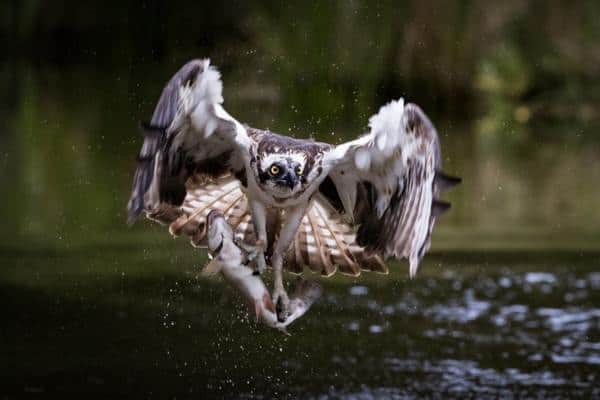
The habitat of the Osprey encompasses a diverse range of coastal and freshwater environments, showcasing the bird’s adaptability to various ecosystems. Ospreys are commonly found near bodies of water such as lakes, rivers, estuaries, and coastal regions around the world.
Range
The Osprey has a notable range in Hawaii, primarily observed as a non-breeding visitor and occasional winterer. While they are more frequently recorded in the Southeastern Hawaiian Islands, sightings have been reported throughout the archipelago, including Kaua’i, O’ahu, Moloka’i, Lana’i, Maui, and Hawai’i Island. They are often seen near river mouths, ponds, and aqua farms, where they find ample nourishment during the winter months.
Conservation Status
The Osprey (Pandion haliaetus) holds a relatively positive conservation status worldwide, reflecting successful conservation efforts and increased awareness of the species’ ecological importance. The International Union for Conservation of Nature (IUCN) lists the global population as “Least Concern.”
Interesting Facts
1. Heavyweight hunters
Ospreys are known for their exceptional fishing skills, and they can catch fish that are larger and heavier than themselves. They have been observed catching fish weighing up to 4-5 pounds (1.8-2.3 kilograms).
2. Ecological role
Ospreys play a crucial ecological role as top predators in aquatic ecosystems. By regulating fish populations, they contribute to the overall balance and health of their habitats.
3. Symbolic significance
Ospreys hold cultural and symbolic significance in many societies. They are often revered as powerful and majestic birds, symbolizing strength, resilience, and a deep connection to nature. Their impressive hunting abilities and majestic appearance have captivated the imaginations of people throughout history.
4. Impressive vision
Ospreys have remarkable vision, with eyes specially adapted for spotting fish beneath the water’s surface. Their eyes have a high density of cone cells, enabling them to see in detail even in challenging lighting conditions.
5. Built-in sunglasses
Ospreys have a unique feature called a “third eyelid” or nictitating membrane. This translucent membrane acts like sunglasses, protecting their eyes from glare and reducing the risk of damage while diving into water.
Frequently Asked Questions
1. Can Ospreys swim?
While Ospreys are capable of swimming, they are not adapted for prolonged periods in the water. They are excellent divers and can swim short distances to reach the surface if needed.
2. How long do Ospreys live?
The average lifespan of an Osprey is around 7 to 10 years. However, with favorable conditions and protection, they can live up to 20 years or more in the wild.
3. How fast can Ospreys fly?
Ospreys are powerful and agile flyers. They can reach speeds of up to 40-50 miles per hour (64-80 kilometers per hour) during normal flight, but they can achieve even higher speeds during hunting dives.
4. Can Ospreys hunt at night?
Ospreys are primarily diurnal, meaning they are active during the day. They rely on clear visibility to spot fish in the water, so they are not typically active hunters during nighttime hours.
5. Can Ospreys be kept as pets?
No, it is illegal to keep Ospreys as pets in most countries. They are wild birds protected by laws and regulations to ensure their conservation and well-being. It is important to appreciate and observe Ospreys in their natural habitats.
